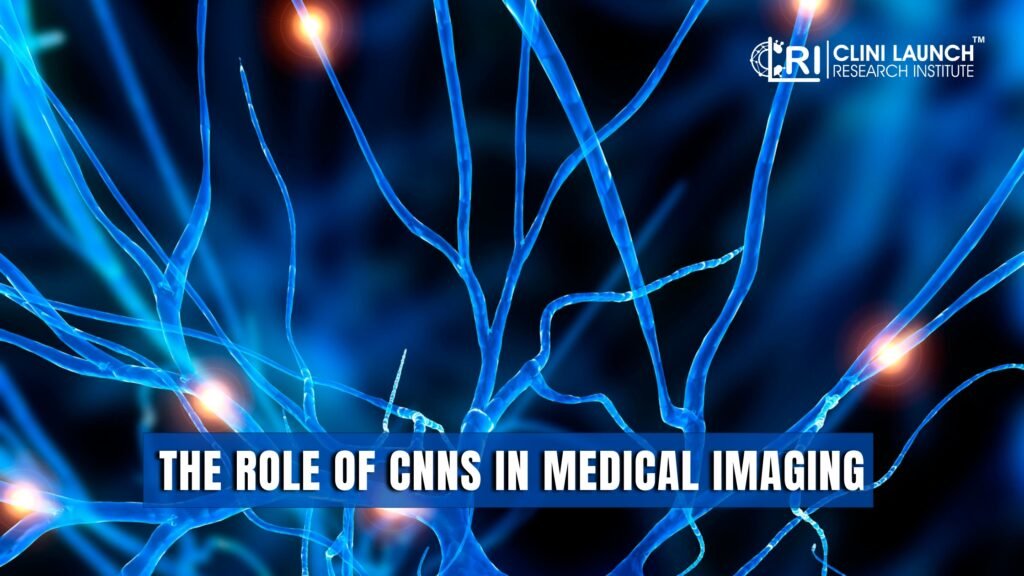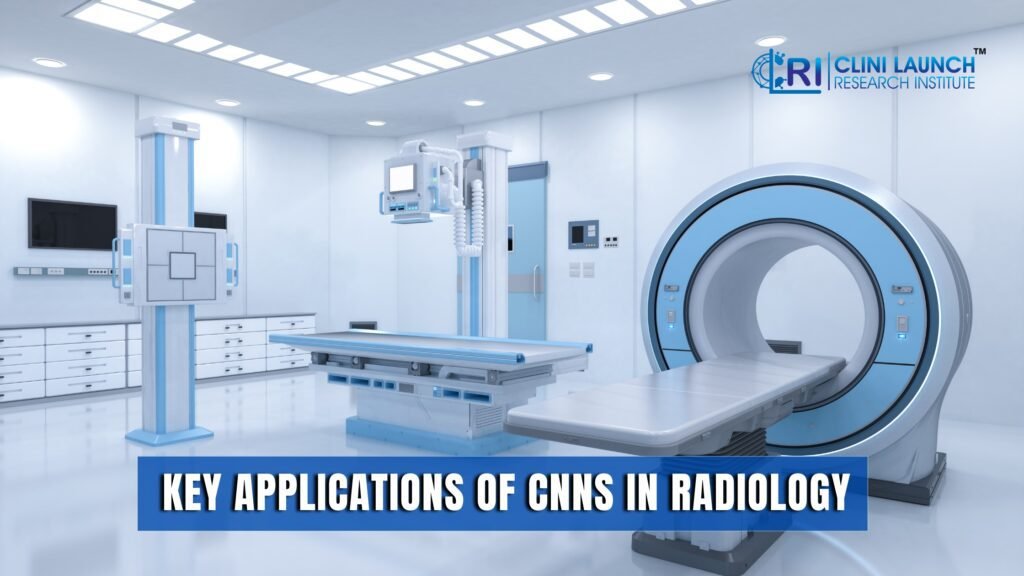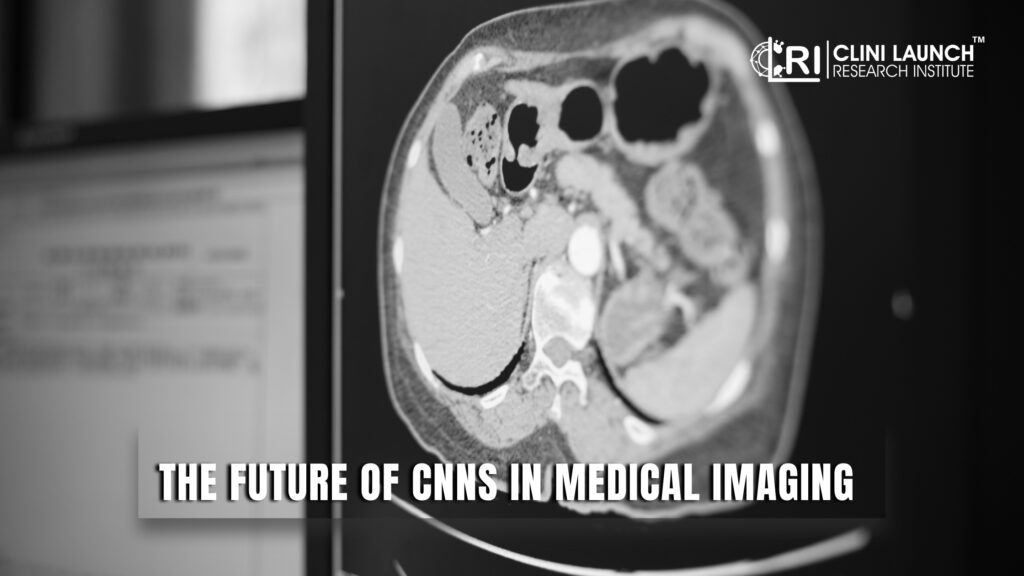Introduction
Artificial Intelligence (AI) is transforming the healthcare industry, with Convolutional Neural Networks (CNNs) leading the path in medical imaging and radiology. The growing need for accurate and fast diagnosis has driven the adoption of deep learning techniques in healthcare. Among these, CNNs have shown exceptional capability in visual recognition tasks, making them ideal for analyzing medical images such as X-rays, MRI scans, and CT scans.
Medical imaging plays a significant role in disease detection, treatment planning, and monitoring. However, traditional methods rely on human expertise, which can be subjective and time-consuming. This is where Convolutional Neural Network in deep learning comes in, enabling automated and highly accurate image analysis. This blog explores how CNNs work, what their key applications are, and which challenges they face in medical imaging.
Understanding Convolutional Neural Networks (CNNs)
What Are CNNs?
Neural networks consist of multiple layers, including an input layer, hidden layers, and an output layer. Convolutional Neural Networks are a specialized type of deep learning model designed for image-based tasks, particularly image recognition and processing. These networks are inspired by the way the human visual system processes images, automatically detecting patterns, edges, and features without human intervention.
Compared with other models, the model with twice transfer learning CNN with output neuron achieved the best accuracy of 98.9%.
How CNNs Work
CNNs function through multiple layered operations:
- Convolutional Layers: Apply filters (kernels) to detect edges, textures, and complex structures.
- Pooling Layers: Reduce spatial dimensions while retaining essential image features.
- Activation Functions: Typically, Rectified Linear Unit is used to introduce non-linearity and improve feature learning.
- Fully Connected Layers: Interpret extracted features and generate final predictions.
Which Features Make CNNs Unique?
Unlike traditional Neural Networks, CNNs automatically learn features from raw data, making them more effective at analyzing complex medical images without requiring manual feature extraction.
Enroll for: PG Diploma in Clinical Research
The Role of CNNs in Medical Imaging

Creative Designed by Md Aayan Ansari (Graphic Designer at CliniLaunch)
Why is Medical Imaging Important in Healthcare?
Medical imaging is a non-invasive technique that allows healthcare professionals to visualize internal organs, tissues, and abnormalities. It plays a crucial role in diagnosing conditions such as cancer, neurological disorders, and cardiovascular diseases.
Which Imaging Modalities Use CNNs?
CNNs are applied in various medical imaging techniques, including:
- X-rays: Used for detecting fractures, pneumonia, and tuberculosis.
- MRI (Magnetic Resonance Imaging): Helps identify brain tumors, neurological disorders, and soft tissue anomalies.
- CT scans (Computed Tomography): Useful in detecting lung diseases, internal bleeding, and trauma injuries.
- Ultrasound: Assists in fetal health monitoring, cardiovascular analysis, and detecting organ abnormalities.
- Histopathology Images: Aids in cancer diagnosis by analyzing biopsy samples at a microscopic level.
How Do CNNs Improve Image Interpretation?
CNNs improve medical imaging accuracy by:
- Enhancing image quality through noise cancellation and contrast adjustments.
- Detecting anomalies with higher precision than traditional methods.
- Learning from large datasets to improve diagnostic capabilities over time.
Key Applications of CNNs in Radiology

Creative Designed by Md Aayan Ansari (Graphic Designer at CliniLaunch)
1. Automated Disease Detection
CNNs have revolutionized disease detection by identifying complex patterns in medical images.
How do CNNs assist in detecting diseases?
- Cancer Detection: CNNs analyze mammograms to detect breast cancer at early stages with high precision.
- Lung Diseases: CNNs can detect pneumonia, tuberculosis, and even COVID-19 from chest X-rays.
2. Image Segmentation and Enhancement
How do CNNs improve medical imaging clarity?
- Tumor Segmentation: CNNs accurately define tumor boundaries in MRI and CT scans, aiding in precise surgical planning.
- Image Enhancement: CNNs use super-resolution techniques to improve image clarity by reducing noise and artifacts.
3. Predictive Analysis & Early Diagnosis
CNNs contribute to predictive healthcare by:
- Detecting early signs of Alzheimer’s, Parkinson’s, and strokes.
- Analyzing patient history to predict potential health risks.
4. Reducing Human Error in Radiology
How do CNNs provide decision support to radiologists?
- Offering a second opinion in ambiguous cases by cross-referencing multiple medical images.
- Reducing misdiagnosis by highlighting abnormalities that radiologists might overlook.
- Providing heatmaps and probability scores to indicate areas of concern.
Advantages of Using CNNs in Medical Imaging
Why are CNNs beneficial in medical imaging?
- Faster and More Accurate Diagnoses: CNNs process images in seconds, ensuring rapid and precise diagnoses.
- Efficient Handling of Large Datasets: CNNs analyze thousands of images efficiently, reducing data overload for radiologists.
- Reduction in Radiologist Workload: Automating image analysis allows radiologists to focus on complex cases.
- Cost-Effectiveness: CNNs minimize the need for unnecessary tests and second opinions, lowering healthcare expenses.
Challenges and Limitations of CNNs in Radiology
What Challenges Do CNNs Face in Healthcare?
- Need for High-Quality Labeled Datasets: CNNs require large, labeled datasets, which can be difficult to obtain.
- The Black Box Problem: CNNs’ decision-making processes are often unclear, leading to concerns about trust and interpretability.
- Ethical and Privacy Concerns: Patient data must be protected under strict privacy regulations.
- Regulatory Challenges: AI-driven diagnostic tools require extensive validation before being approved for medical use.
The Future of CNNs in Medical Imaging

Creative Designed by Md Aayan Ansari (Graphic Designer at CliniLaunch)
How Can CNNs Evolve in Medical Imaging?
- Integration with Other AI Models: Combining CNNs with Recurrent Neural Networks (RNNs) can enhance temporal analysis in imaging.
- The Role of Federated Learning: Enables hospitals to share insights without compromising patient privacy.
- Real-Time Diagnosis and AI-Assisted Surgery: AI-powered CNNs could provide real-time decision-making assistance during surgeries.
- Telemedicine and Remote Diagnostics: CNNs facilitate remote disease detection, improving healthcare accessibility.
Conclusion
CNNs are revolutionizing medical imaging and radiology by enhancing diagnostic accuracy, speed, and automation. While challenges such as data privacy and regulatory hurdles remain, the continued development of Convolutional Neural Networks for visual recognition and their integration with Recurrent Neural Networks will further enhance their role in healthcare.
As deep learning technologies evolve, CNNs will play an even greater role in early disease detection, predictive analytics, and remote healthcare solutions. The future of AI-driven radiology is bright, paving the way for a more efficient, accurate, and accessible medical system. Ready to explore advanced AI solutions for medical imaging? CliniLaunch Research Institute is at the forefront of innovation, driving advancements in deep learning for healthcare.
